“Like water and heat, internet is a clear necessity in the modern world, opening doors to education, employment and engagement.” (Sarah Lai Stirland, Wired)
This great “story of community-initiated sustainable development” that was posted on Boing Boing is some of the best news I’ve heard all week.
Sarah Lai Stirland of Wired writes: “Last month, volunteers turned on a novel broadband network in this 135-unit block [a San Francisco housing project], throwing a digital lifeline to Emma Casey and other tenants.”
“Using a refurbished PC she picked up for $100, the 47-year-old mother of two adult children is now going online to help her son find a job, get health information and, she says, pay tribute to neighbors who’ve met with violent or untimely deaths.”
While local governments remain mired in debates over how to do it – public versus private infrastructure – and academics argue cart and horse scenarios on education and teachers versus IP addresses and computers, some enterprising mixes of profit and non-profit groups working with local communities are getting the job done.
The supercool technology behind this SF community project, providing bandwidth that matches DSL service, is from Meraki. While it is still in beta, the “Meraki’s mini” contains a Wi-Fi router-on-a-chip, combined with the same microprocessor and same memory that formed the heart of a Silicon Graphics workstation 10 years ago. These components are now cheap enough to sell with a box in a $49 dollar “plug in.”
The New York Times noted, “$50 boxes that serve, depending upon population density, more than one household and can be installed by anyone with the ease of plugging in a toaster…….This grass-roots approach, with next-to-nothing expenditures for both equipment and operations, is impossible to ignore.”
One billion on line – five billion to go. And, lets start with those most in need this time.
18.-22. May 2007 WirelessSummit, USA
Aug/Sept 2007 WSFII 2007, Ghana
The concept of Mesh networking is to automatically detect the best route, highest bandwidth, and dynamically adjust to varying conditions. The ability to automatically reroute connections was first developed by phone companies to deal with down phone lines and provide people with continuous access.
While Meraki requires multiple nodes for widespread coverage, Air Jaldi has found an elegant solution to developing a wireless mesh network that works over large distances in the mountainous terrain and inclement weather of the Himalayas. Air Jaldi’s Mesh network, provides broadband internet access, and is based on recurring deployments of a hardware device, which is designed, and built locally – it is known as the Himalayan-Mesh-Router.
Here are some members of Tibetan Technology and AirJaldi . They have just installed A New Node at Government Polytechnic College, Kangra.
[left to right: Tenzin Gonpo, Phuntsok Dorjee, Ranbhir Rana, and Pauli]
Photographed by Aurelien Personnez, 15th March, 2007
Another flagship Mesh networking project is the e-village, “in Mahavilachchiya (Sri Lanka), a little known village, 40 km from the nearest town Anuradhapura, and surrounded three sides by the Vilpattu jungle…… There are 50 PCs and a sophisticated multimedia lab. The majority of the computers are located at the houses of the children attending the Horizon Lanka Academy.”
Tags: Mesh Wireless networks | global development | digital divides | Sri Lanka | e-village | community WiFi | Internet access | broadband access | Mest | networking | Meraki | Air Jaldi | Tibetan Technology | ICT education | wireless | social entrepreneurship | internet |

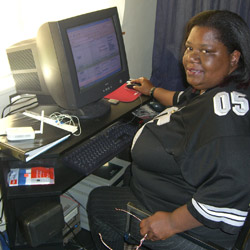
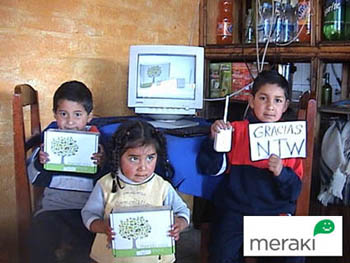
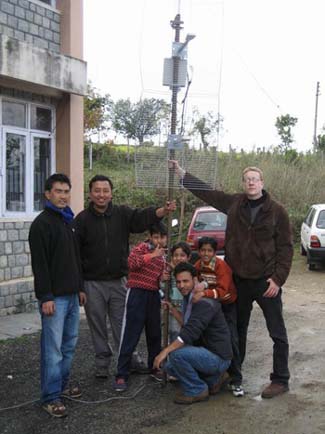
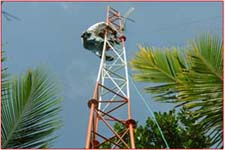
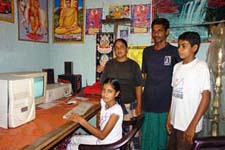
Sun, Apr 8, 2007